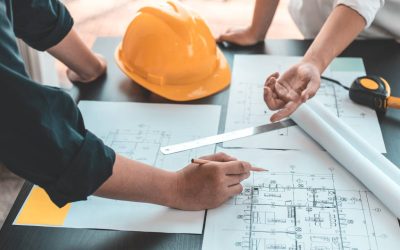A few days ago a lawyer friend of mine told me that there is a section in their building that is a “dead zone”. What she meant is that people refuse to sit in that area of their office. They refuse to sit there because the air in that area is “stale.” My knee-jerk response to her was, “There’s something not quite right with the HVAC system.”
I haven’t had a chance to visit the building that my friend works in, so I don’t know all the details. However, I know that several factors can cause stale air in an office space or any other area. I’d like to discuss just two in this article.
1. Incorrect Ventilation Rate
The “V” in “HVAC” stands for ventilation. The HVAC system’s primary and most important function is to provide comfort for building occupants. Any HVAC system that performs its main function properly will have ventilation at a rate appropriate to the building size, purpose, and level of occupancy.
What do I mean by “ventilation rate”? This is the rate at which fresh air from the outside environment is incorporated into the air inside the space that is being air-conditioned. In an office space where people are working, fresh oxygen from outside must replace the carbon dioxide that the people working inside the room are producing.
A building should have an air change rate specific to the purpose and occupancy of the building. The air change rate is the number of times in an hour that the air is completely refreshed or changed. In the case of an office, the air change rate should typically be 2 times per hour in order to provide adequate comfort for the occupants. This means that every hour the air in the space will be refreshed by adding fresh air from outside twice.
If the HVAC system in a public office space has not been adequately designed to change the air twice each hour, there will be an accumulation of stale air and the space will be uncomfortable to sit in and to work in.
2. Improper Duct Opening Placement
To avoid getting into too much technical detail, I will just describe this at a high level.
The ducting that brings fresh air into a space has an opening that allows the fresh air to be delivered into the space. Furthermore, there is ducting that allows the stale air to be exhausted from the space and this ducting also has an opening that receives the stale air. If the opening for the fresh air and the opening for the exhaust air are located too close to each other there will be a dead zone inside the space where the fresh, conditioned air does not reach.
It’s important that the fresh air ducting and the exhaust air ducting have their openings situated at locations in the space that are not too close to each which would prevent proper circulation. These two openings must be properly placed in the room such that there is adequate movement of the air within the space. Only then will stale air be exhausted properly.
Stale air is unhealthy; it causes drowsiness, and it causes discomfort. All of these factors decrease personal productivity. Proper HVAC system design can prevent all these issues.
















